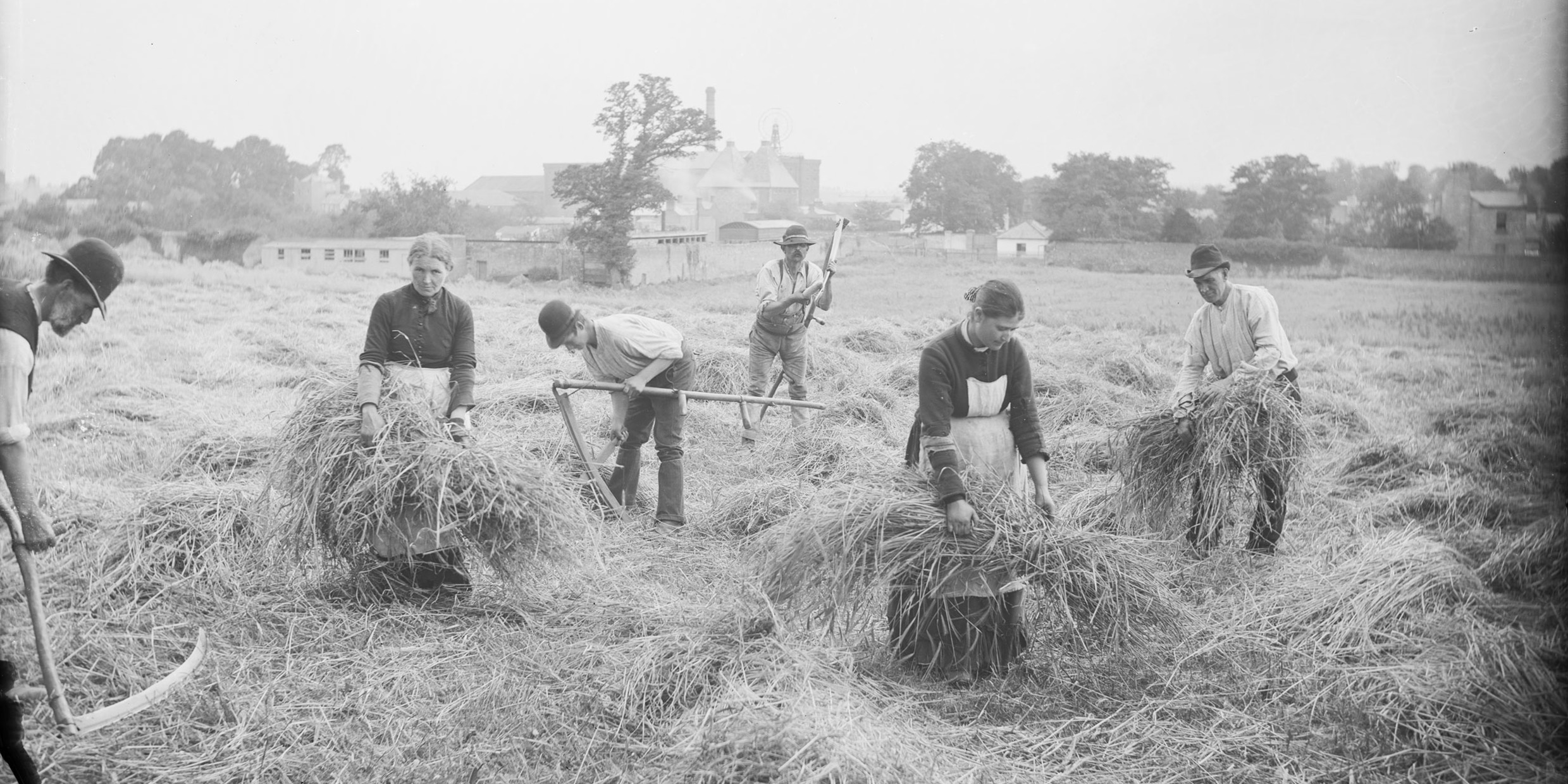Originally published 9 September 1991
Ventry Ireland — Twelve years ago at the end of a spell of fine summer weather we could look out from our house in the rural west of Ireland and count a thousand haystacks. Field after field of haystacks, as far as the eye could see.
This summer, for the first time, there is not a haystack to be seen. Ireland’s rural west has embraced high-tech agriculture with disorienting speed.
I used to spend a few days each summer helping my neighbors cut the grass with scythes, then, after the grass had dried on the ground, pitch it into stacks, and later still carry it to the hay shed. It was hard, satisfying work on a sunny day, with an occasional cup of tea taken in the shade of the hedgerow and a tumbler of whiskey at day’s end.
My neighbors kept a wary eye on the weather; if the grass didn’t dry on the ground and in the stack it would rot in the shed and there would be nothing to sustain the animals through the winter.
All of that is gone now: the scythes, the pitch forks, the hedgerows, the aching muscles soothed by whiskey. Instead, grass is cut for silage, stored green under airtight conditions. One popular new technology uses a single combine to cut the grass, wrap it in opaque plastic, and pop the bundles out the back of the machine. Haystacks have been replaced by what look like giant black beach balls.
A rapid transformation
Nothing unusual about any of this; the haystack vanished a long time ago in most developed countries of the world. What is different about western Ireland (and other fringe areas of Europe) is how recent and rapid has been the change. The transformation of the landscape has happened even as we watched.
Ireland is famous for its many tiny fields separated by hedgerows. Now the hedgerows are being rooted out by giant earth-moving machines so that the silage makers can operate their machines more efficiently. Also, there is no longer any need to rotate crops and animals among many small fields; farmers rely on artificial fertilizers keep the land fertile.
Gone too are the oat sheaves stacked in shocks, and fields of potatoes and turnips. One crop — grass for cattle — is enough to satisfy the farmer’s agricultural needs. Vegetables for the table are bought at the supermarket.
Productivity has soared.
The result of these changes is money in the pocket, new homes and automobiles, multi-channel satellite television, holidays at Disney World — in short, all of the standard material trappings of homogenized Euro-American consumer culture.
The result of these changes is also increased rural unemployment, the dispersal of families, diminution of wildlife, pollution of ground water and streams by fertilizers, and contamination of the food chain by pesticides.
Our neighbors have mixed feelings about the changes that have overtaken their traditional culture. They know something attractive has been lost, but such is the lavishness of technology’s material gifts that they are unwilling to hold to the old ways.
And who can blame them? Certainly not me.
Closer to nature
We came to Ireland twelve years ago to seek — for a few months each year— a life that was less beholden to machines, closer to nature, less consumerist. We built a house on a hill by the sea without electricity. No washer, no dryer, no telephone, no television, no central heating. We furnished the house with handsaw, hammer, plane, needle and thread. Local craftsmen or craftswomen supplied crockery, rugs, decorations. Travel was by bicycle or shanks’ mare. For a decade, our summers in Ireland were everything we hoped they might be: annual retreats from frenzied servitude to technology.
Alas, technology has nibbled away at the margins of our simplicity. Today, the house has electricity and a washing machine. A gasoline strimmer has replaced the scythe for keeping the yard trim. Power tools do the work of handsaw and plane. There is a sewing machine in the loft and an automobile in the yard. A reliable well with electric pump is going in soon. A telephone and television can’t be far behind.
In other words, flicks of the switch have replaced trimming the wicks and riddling the grate, and all the good intentions in the world don’t seem to be able to stop the intrusion of machines. What has happened to our “simple” life in the west of Ireland is the same as what has happened to the traditional agricultural community we see outside our windows: Machinery and economies of scale have exerted their inexorable and compelling logic.
The haystacks are gone, and with them a way of life in harmony with nature. Now our neighbors must begin their struggle against consumerism, over-development, litter, crime, the breakup of families, erosion of the Irish language, an end to a rich indigenous tradition of storytelling and music, despoilation of a spectacularly beautiful landscape, and — in this last unhurried paradise in the Western world — frenzied servitude to technology.



